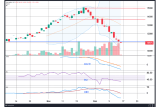
The recent significant change in approach, marked by major Japanese corporations committing to unprecedented pay increases, has sparked optimism that the traditionally conservative stance of employers in the country towards salary expenditure may be evolving. This shift in dynamics follows a prolonged period of three decades characterized by low inflation and nominal wage growth. It coincides with anticipation surrounding a forthcoming Bank of Japan policy meeting, where the prospect of substantial reform is now under serious consideration. It is widely anticipated that the Bank of Japan (BOJ) will shift its policy in the meeting this week and introduce a hike in interest rates.
The resurgence of these wage negotiations aligns with Prime Minister Fumio Kishida’s focus on addressing years of stagnant wage growth. With Japan’s labour market tightening, domestic companies are under pressure to enhance wages to attract and retain talent, especially among younger employees. While influential companies like Toyota Motor lead the way, it’s important to recognize that a big portion of the workforce is employed by small and medium-sized enterprises. While progress is being made, there is still much to be done.
Despite the wage increases, real wages, adjusted for inflation, have continued to decline for 22 consecutive months. To outpace inflation, nominal wages must accelerate by more than 0.5%, necessitating wage hikes of at least 4.5% in upcoming negotiations. The sustainability of these wage increases, particularly for smaller and medium-sized firms, remains uncertain due to their limited bargaining power to offset higher labour costs.
Meanwhile, the maritime industries in Japan are confronting challenges that impact their operations and profitability, notably the surging labour costs. This upward trend poses a significant challenge to the bottom line, especially for labour-intensive industries like ship construction. While currency depreciation has provided some much-needed relief for the ship construction business, particularly as shipbuilding contracts are denominated in US Dollars, this dynamic could shift once the BOJ begins hiking interest rates. Currency fluctuations add complexity and heighten the difficulty for domestic maritime enterprises in effectively mitigating currency-related risks.
To address labour challenges, shipyards are exploring various solutions, including investment in technology such as robotics and artificial intelligence to boost productivity and reduce labour costs. Strategic enhancements in supply chain management and operational efficiencies are also pivotal in augmenting competitiveness and mitigating cost constraints. However, these initiatives entail additional capital outlays for shipbuilders. As shipyard berths become increasingly occupied by an unprecedented backlog of bulk carrier orders extending well into 2027 and beyond, there is no better time than now for Japanese builders to take score and devise strategies for their long-term viability in the global arena.
Maritime shipbuilding stands as a cornerstone of the Japanese economy, providing livelihoods to numerous yard workers across coastal cities in Japan. It’s imperative for leading Japanese shipyards to unite and advocate for government backing, including subsidies and incentives, to fortify the competitiveness of the maritime industry vis-à-vis its Chinese and Korean counterparts. Additionally, initiatives such as funding for research and development, skill-enhancement programs for labour and financial support for technology advancements should be explored, particularly in response to escalating wage costs. Collaborative action in these areas can ensure the sustained vitality of Japan’s maritime sector.
By Eugene Quek, Partner and Head of Projects in Japan.
Articles
You may also be
interested in
View allGet in touch
Contact us today to find out how our expert team can support your business















